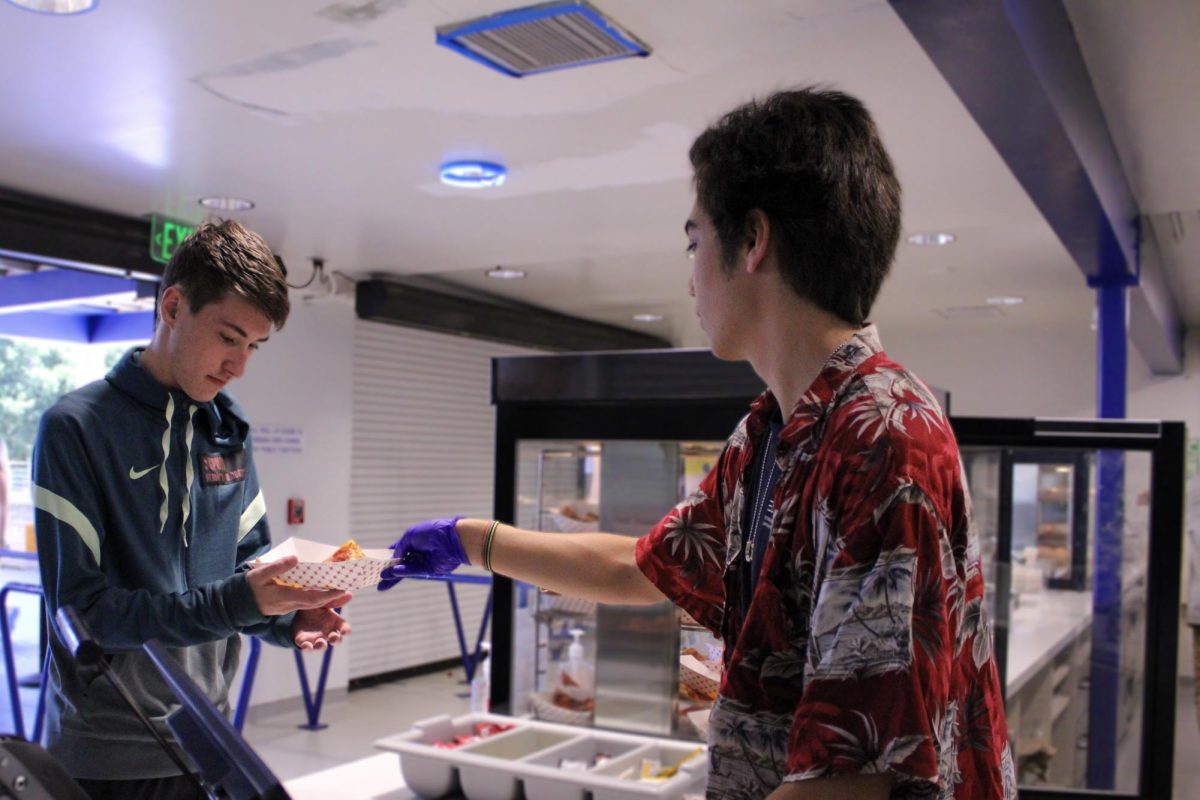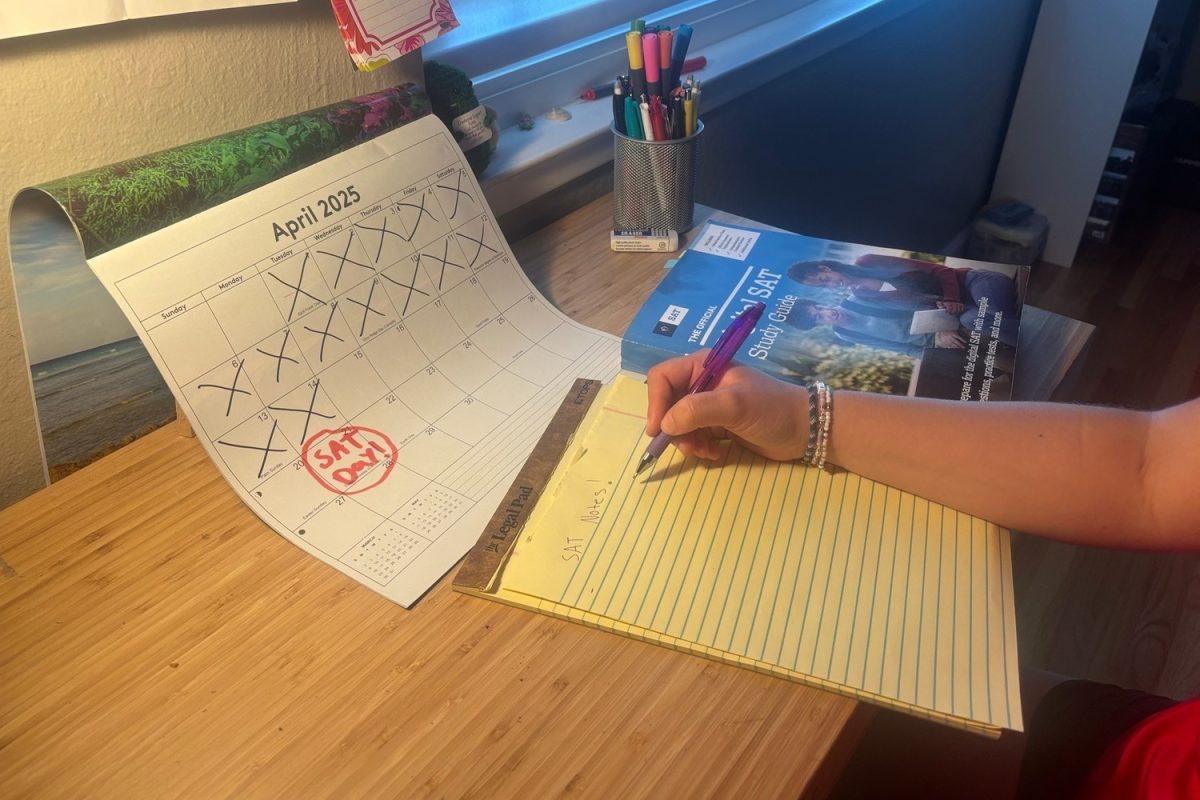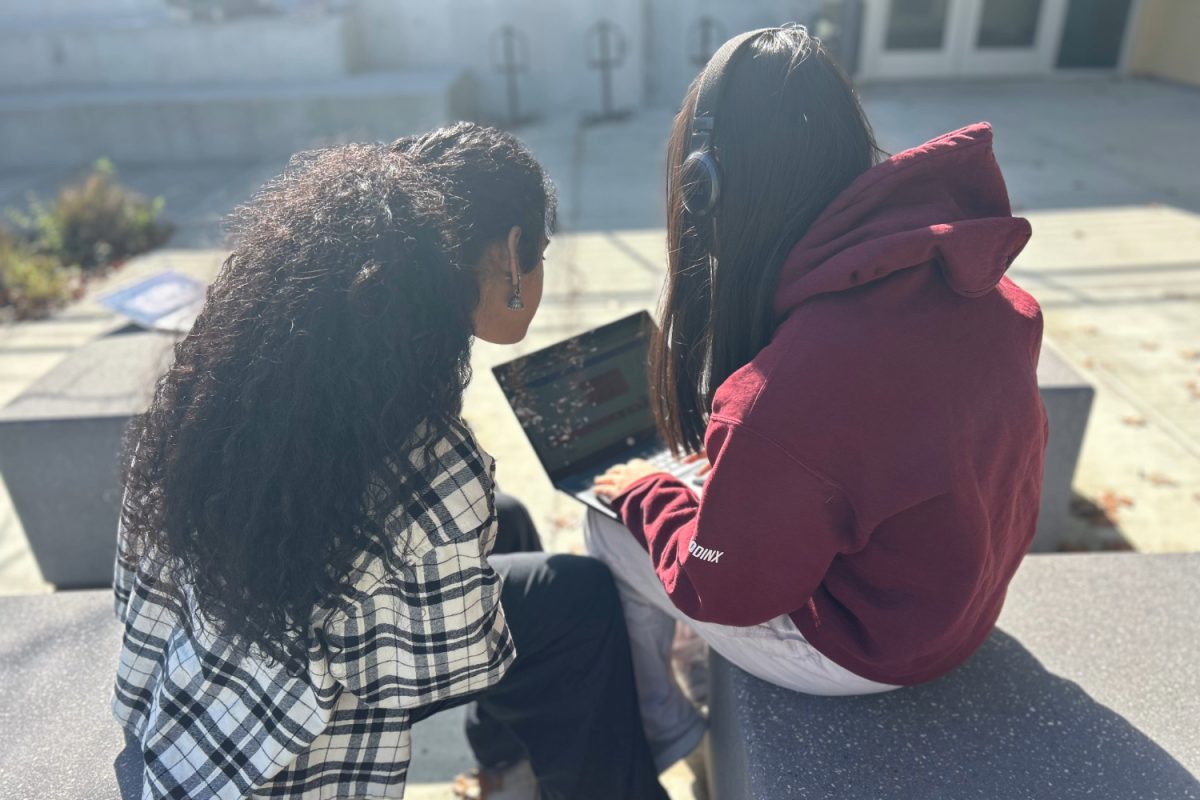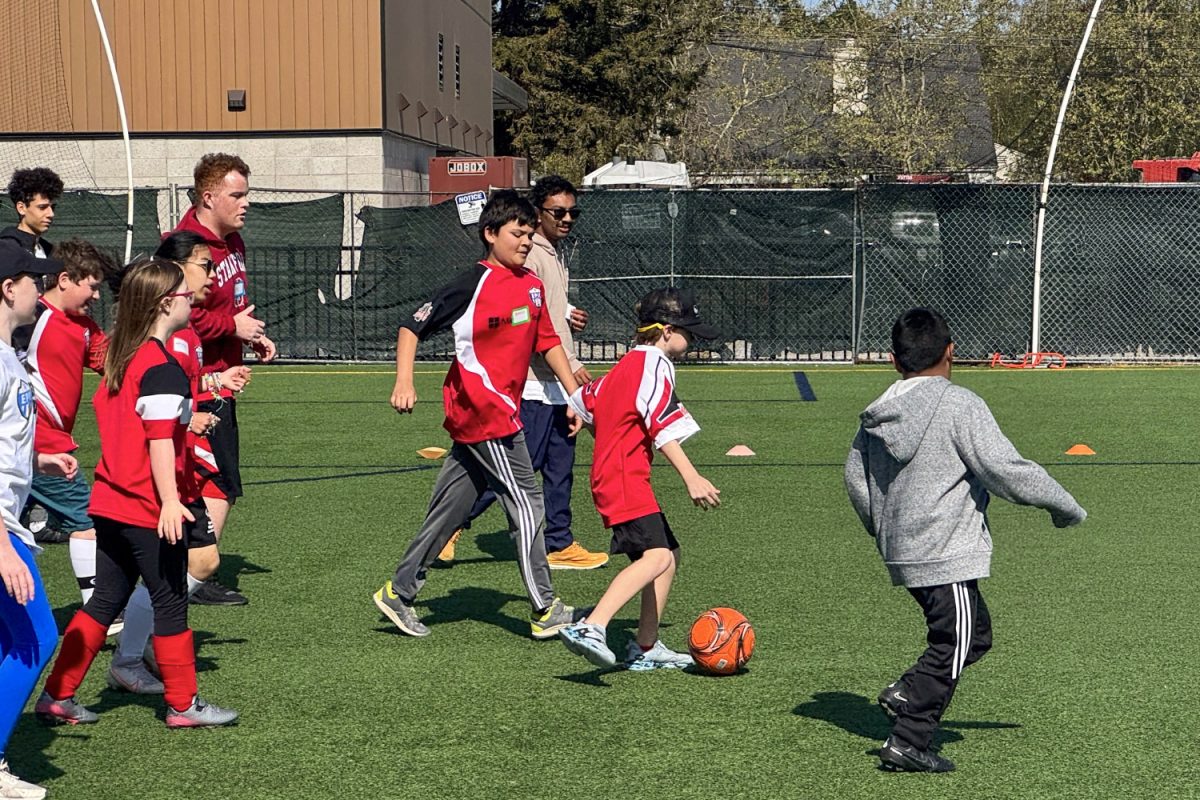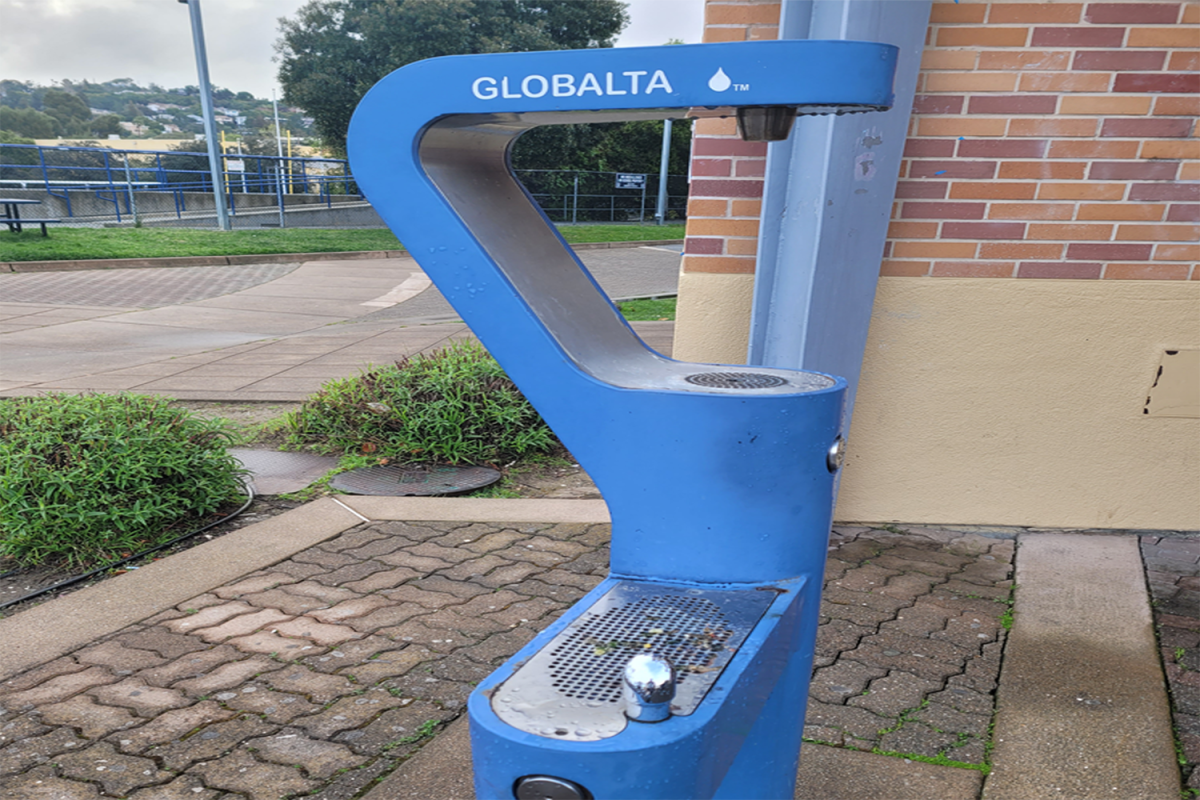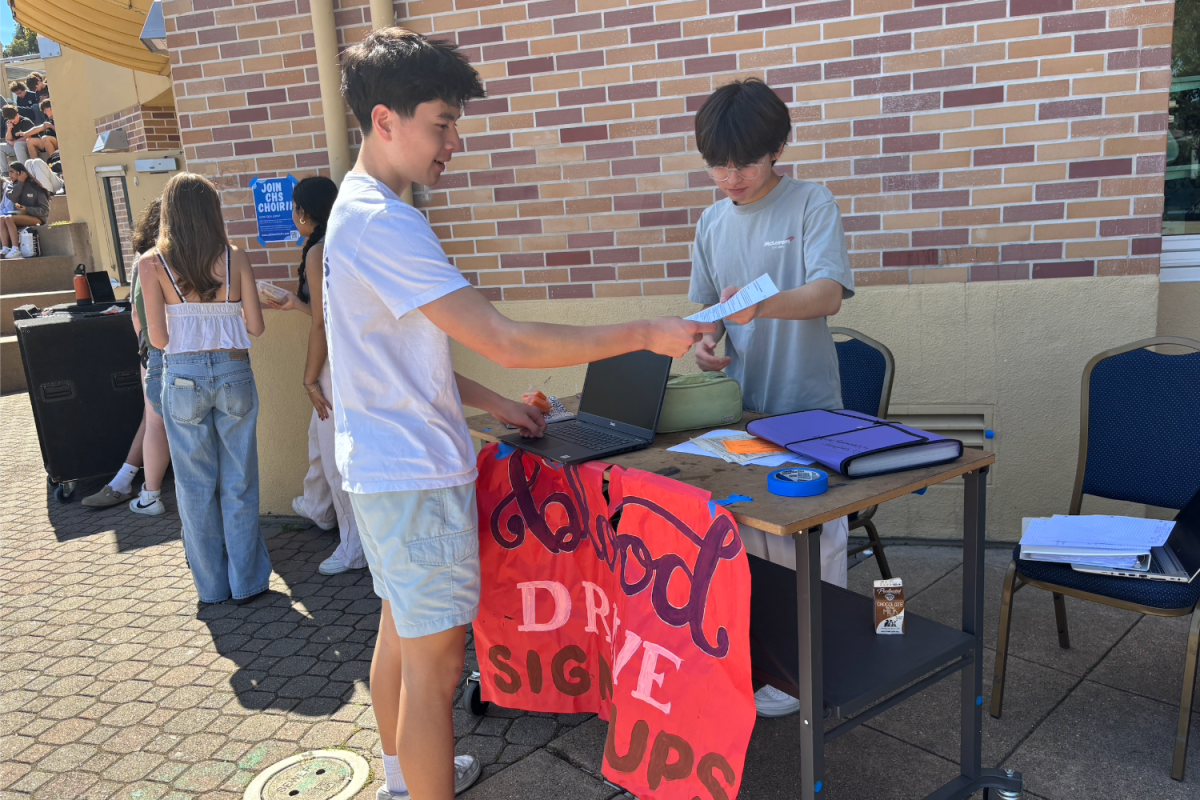Although providing a strong academic program has always been a focus for schools, it’s not the only contributing factor to student success. In recent years, schools have begun dedicating more effort to another contributor: ensuring that their students have the proper nutrition to learn.
At Carlmont, food service policies have undergone many changes.
Before the pandemic, students had to pay for school meals by depositing money into their student accounts. But in the years since, each student has been entitled to one free breakfast and lunch every day.
These changes swept through California schools as a result of new efforts to address food insecurity and provide access to meals regardless of socioeconomic status.
“To qualify for federal and state cash reimbursements under the National School Lunch Program, every student must take a fruit or juice with breakfast and a fruit or vegetable at lunch to qualify as a reimbursable meal. This is to meet specific federal nutritional standards,” said Gail Horn, Carlmont’s food service lead.
According to Horn, Carlmont strongly emphasizes this policy. If the meal doesn’t qualify as reimbursable — meaning a student does not take a fruit or vegetable — they are warned that they would have to pay $3 for breakfast and $5 for lunch.
However, there have been significant drawbacks to the new system. Increased food waste and concerns about toxic PFAS chemicals — a group of perfluoroalkyl and polyfluoroalkyl substances — in packaging are among the new problems school communities face due to wider student consumption of school-provided meals and requirements to take specific foods.
Nevertheless, Carlmont’s food service has continued to grow and adapt to address these concerns.
A new response
One such way the school has adapted is by implementing food share bins by lunch lines.
Since 2017, the bins have served to share students’ unwanted food with others and cut down on food waste. At the end of each serving period, all food left in the bins is rewashed.
According to a survey of 80 Carlmont students, around 80% eat school-provided meals at least once in a while. However, only 3.7% out of the total 45% of students who place food in the share bins do so daily. The numbers are even lower for those who take out food from the bins — only about 15% of students responded that they do at least once in a while, while 84% of students said they had never taken food from the bins.
Furthermore, when asked what their thoughts were on the effectiveness of the share bins at reducing food waste on a scale of one to five, only 4% felt the bins were very effective — a five — and most thought they weren’t impactful — 33% chose a three.
On the other hand, when asked how effective the share bins are at providing an option for students who may want extra food, the majority of people — 45% — chose a four or a five, and fewer people chose a one, two, or three as compared to the previous question.
Horn sees this data reflected in her own observations of the lunch line.
“I don’t know how many students take advantage of the share bins, but it’s not very many. I know we have a few students who take food from the bins,” Horn said.
Horn began working at Carlmont in 2014 and became the food service lead in 2023. During her time at Carlmont, she’s witnessed many changes — snacks in the vending machines used to be sold at the counters, and more recently, the school has implemented meatless Mondays and a tradition of serving pizza on Fridays.
According to Horn, Carlmont also used to have two operating kiosks, one by the gym that is still used today and another in the Quad.
Each day, Carlmont’s food service serves up to 175 breakfast meals and 1,100 lunch meals. The school hires student workers who help pass out the meals during mealtimes as well. Each worker generally serves around 100 students per day.
Kent Lip is a junior and has worked at the lunch line since his sophomore year. Like Horn, Lip has also noticed benefits, albeit limited, of the food share bins.
“Overall, I’d say the feedback is pretty positive. They reduce food waste; if other people want food, they can get that, especially for items that people don’t want, like fruits or carrots. I still have to give them to students, but I would prefer that they put them in a share bin for someone else instead of just throwing them in the trash or throwing them at each other — I’ve seen people do that with carrots,” Lip said.
According to Lip, the bins often get filled up.
“In terms of reducing food waste, they’re a good step in the right direction. I’m not sure how many people use them, but I do notice that some people take food from the bins, so I’d say they’re relatively successful,” Lip said.
What the job entails
Like all other things, the job comes with its challenges. While the environment is flexible for student workers, less lunchtime is less social time with friends.
“Depending on how busy that day is, I have 10 to 20 minutes if I’m lucky to hang out with friends,” Lip said.
However, Lip’s biggest challenge has been working with students who try to bend the rules.
“They try to push me around. People will try not to take fruits, or I’ll give them the fruit, and they’ll throw it back into the fruit pile. Or I’ll see people using different IDs to get second lunches. I had one case where someone actually stole a lunch from my hand. I couldn’t chase after them from behind the counter,” Lip said.
Other times, students would ask him if he had any other types of food stashed away other than what they were serving for that day.
“We won’t have anything else, but they’ll try to push me to get something else for them. Those students are the hardest to work with, but they’re only a small number,” Lip said.
For Arthur Gu, another junior who works at the lunch line, the root of the problem is that kids won’t eat their fruits and vegetables.
“There needs to be more emphasis on putting the fruits and vegetables into the actual meal itself. Even then, for example, we serve pizza occasionally with vegetables as the toppings. Kids will pick the toppings off of the pizza and throw them away. No matter what you do, kids are going to throw away the food,” Gu said.
With regard to the share bins, Gu only sees limited impact.
“People will walk out and immediately put their unwanted food straight into the share bins. Then, there will be people who congregate around the share bin, and sometimes they’ll take the carrots, open them, and throw them everywhere, making a huge mess,” Gu said.
He has never seen Carlmont enforce the $3 or $5 fee for not taking all parts of a meal.
“We’re supposed to charge them. The problem is that there’s no way to enforce that. The computer terminal makes it so that, if there is no money in the student’s account, it is impossible to charge them,” Gu said.
Furthermore, like his co-worker, Gu has noticed many people attempting to take two meals for free. However, with new technology that allows him to see pictures of each student when they submit their ID, such instances have decreased.
“Sometimes people get by because we’re serving hundreds of people, and things can slip through the cracks pretty quickly,” Lip said.
Another challenge is the rowdiness in the lunch lines. Gu often notices that students aren’t very kind to each other while in line.
“People cut the line. There are so many people that it’s hard to control. The little railings that try to guide people don’t go out far enough, so it ends up being this big basket of students. But I think having administrators around like Mr. Patner is useful,” Lip said.
Forever forward
In order to address such issues, Lip suggests implementing more share bins around campus.
“I still see bags of carrots just sitting on the floor. I think it’d be good to spread more of them out to make people more aware of them. It could be something we advertise a little more,” Lip said.
Horn is already working to prevent students from using a second ID because it prevents students whose IDs were used by someone else from getting food.
“To fix this, I would change the student’s ID number. They would be notified of the change via email. The new ID number is only used for their meals and their school ID number remains the same,” Horn said.
Carlmont also has a MealViewer app that saves students time.
“The signs are posted around the cafeteria. Students can scan the QR code, find out what’s on the menu and the nutritional facts, and rate the meal. This is a good tool because it helps us know what students like,” Horn said.
Regardless, there has been much to learn from the experience.
“My favorite part of the experience is interacting with more people, opening myself up, and becoming better at communicating. You can follow small talk with people, and it’s fun to be able to socialize. I also have friends working with me. There’s the pay aspect as well. It’s a really convenient workplace, especially for a first job,” Lip said.
Writing by Kara Kim
Infographics and photo by Arianna Zhu

